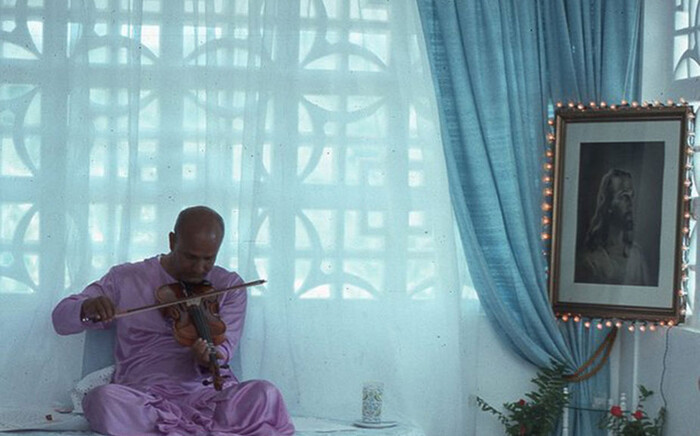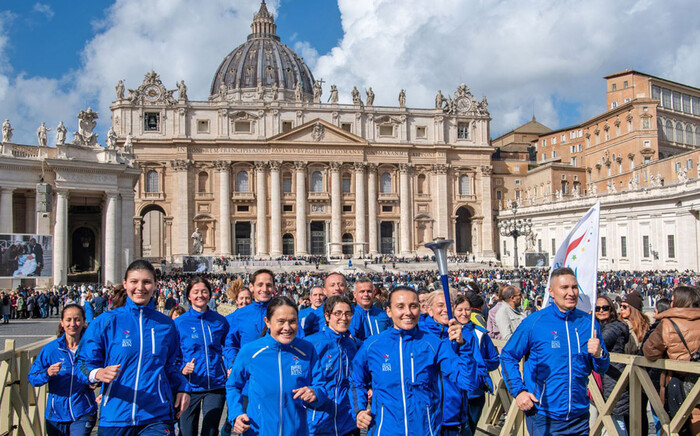
Inspiration-Letters 15
In the Silence Edition, 7 writers recall places and times of quietude, and reflect on their influence...
 Shortly before Guru left this world, I dreamt that I was driving, with my mom, down a road that was over shadowed by big trees. She was in the passenger seat and we were listening to Simon and Garfunkel’s rendition of Scarborough Fair, on the radio.
Shortly before Guru left this world, I dreamt that I was driving, with my mom, down a road that was over shadowed by big trees. She was in the passenger seat and we were listening to Simon and Garfunkel’s rendition of Scarborough Fair, on the radio.
On the day I learned of Sri Chinmoy’s departure, I went home and went to sleep, unable to react. In my dream, I saw that Guru was walking through a deep, dark wood in Wales, surrounded by elves, faeries and forest spirits. They were singing to him in some ancient, forgotten language and he was smiling and smiling.
My spiritual name, Mahiruha, literally means “tree”. I like Celtic mythology and symbolism because of their reverence for trees and nature. Sri Chinmoy himself said many times that he loved trees, their deep aspiration for humanity and their intense cry for God.
Maybe a week after our Master’s Mahasamadhi, I walked over to Kissena Park, about a three-mile jaunt from my house. When I was sure nobody was around me, I allowed the tears to roll down my face. I passed a big tree in a field. Somehow I got the sense that the tree “wanted” me to sit at its base. I don’t know why, but I complied, sitting down on the thick bed of crabgrass that grows around the roots of old trees. It was a chilly late afternoon in Fall, and some of the branches that hung near my face had yellow and brown leaves clinging to them. The sight of those leaves made me feel better.
At this time, I will still letting myself cry silently. The tree “told” me that I could cry but it also wanted me to sing two of Guru’s songs: “He who loves never grows old, God is a shining example”; and “No entrance fee is needed to enter into God’s Heart-Home”. I sang those songs over and over again through my tears. Some young Chinese and Indian girls were playing softball nearby, to the vigorous encouragement of their coach, Mr. Carter. Somehow the sight of their game comforted me, as if life will always go on, in all of its spontaneity, innocence and joy. After half an hour of crying, singing my Master’s songs on hope and new life, and watching softball practice, I left the base of the tree. I knew I would be OK. Definitely, I will always adore that tree.
Here is something I wrote recently, in my attempt to frame Sri Chinmoy’s first full year of silence:
Dear Guru,
Your silence is as rich and as profound as your words were. In the depths of your silence we feel your Universal Heart loves us, cherishes us, and needs us. Beloved Guru, we are swimming, running, diving and rejoicing on the waves and cadences of your silence. Your silence is our true and eternal friend.
With love and gratitude,
Mahiruha
P.S. Here’s a link to a story by Sri Chinmoy, which hauntingly illustrates the power of silence:
Mahiruha KleinEditor
Title photograph: Pavitrata Taylor at Sri Chinmoy Centre Gallery
Remembering October
 To begin with, you can’t help noticing how vivid and beautiful our Aspiration Ground is. Physical spaces seem to interact so much with human consciousness, take on energy and light and livingness — here the devotion and caring of so many of the local disciples ahead of our arrival have created a sanctuary both tranquil and sheltering to the spirit. Within the grounds themselves — flanked by the great mass of vines and trees yellowing with fall — no-one is talking, not for the three days of these observances.
To begin with, you can’t help noticing how vivid and beautiful our Aspiration Ground is. Physical spaces seem to interact so much with human consciousness, take on energy and light and livingness — here the devotion and caring of so many of the local disciples ahead of our arrival have created a sanctuary both tranquil and sheltering to the spirit. Within the grounds themselves — flanked by the great mass of vines and trees yellowing with fall — no-one is talking, not for the three days of these observances.
For three days and nights Aspiration Ground will be open continuously, just as it was one year ago, and many will stay throughout these long hours, enchanted with the solitude and brimming silence.
Seated on a garden balustrade and majestic with his purple dhoti and meditative smile, Guru presides over everything in a centrepiece, four metre high portrait. In a complicity of imagery, the garden theme of the photo flows out onto the stage — real flowers, great banks of pink roses, sections of identical garden wall, a profusion of plants, statues of Ganesha. Threaded strings and necklaces of flowers hang from the Temple entrance. On our first night a three-quarter moon shines perfectly above the amphitheatre of dark trees. And everywhere, candles and candlelit lanterns.
There is a hush in the air, a sense of possibility, as though at any moment something revelatory might come.... We are at the conjunction of a sacred occasion, hallowed ground, the energy generated by these hundreds of seeking souls. Cocooned in this haven of beauty and devotion, we strive for a deeper stillness, a renewal of aspiration. In the middle of the night the veil that separates us from those things we long for, those distant but remembered realities of spirit, seems almost translucent — a little effort more and some special dispensation of grace might come to bring a long hoped for epiphany. This is the place.
Each day repeats the same ceremonial themes. A gong, heraldic, strikes thirteen times and conches sound, triumphal as befits this salute to one of the greatest of great lives. And scores of tinkling simultaneous bells, all sweetness, sweetness. The sounds thrill the soul, proclamatory, seem to reach out to other co-existing worlds in invocation. Each day, too, we will sing together, trailing a little behind the Master’s own recorded Invocation — I smile a little as He lingers on those long devotional notes, wringing out every little drop of God-love and still teaching us about soulfulness.
And each day, as well, our candle offering. In a long line we shuffle slowly forward, holding in our palms the votive candle that is at once the renewal of our discipleship and the offering of our soul’s love. At night, down where Guru’s physical lies, the 500 devotional candles flicker and shimmer, a pool of light like a far off city, poignant and touching. Each tiny flame dances and sways, alive with our hopes or whispered prayers. At night a projection of our Guru’s Transcendental photo towers on a giant screen and there are these wonderful long meditations. Remembering Guru’s comment regarding meditation and the great secret of grace — “when the father is a multi-billionaire, why should the children have to work...?”
Each night Mridanga offers videos of Guru’s life — his meditations, his activities and talks. By chance one has been filmed from almost exactly where I am sitting and in a bizarre juxtaposition of time past and time present I am sitting in Aspiration Ground and watching a video from years ago that almost perfectly captures everything of here and now — same masses of flowers, candles, a stage of white trellises, statues and the Master’s own portraits. Only Guru himself is missing from what we call the present — which might itself be an illusion — and I feel a thrill of surreal and vicarious anticipation ( my time past self) as though at any moment He might again appear, sweeping around the court on his chariot.
How generous and thoughtful our New York family hosts — hot chai, assorted teas, trays of food appear around the clock. And they have built a stage against the back wall of the court beneath the steps — at intervals each day our songsters and poets and musicians perform. In the evenings the main Temple and court lights are turned off and candlelight and lanterns — fifty of these hang from walkway railings — create a haven’s shadowed secrecy. We are each only dim figures, released by this soft half light to our own deeper sincerity and private spaces. The candlelight mutes our setting, confers a curious timelessness — we are shuffling across a landscape that is history itself, impelled by our tribal memory of a lost enlightment. Aspiration Ground is returning us to the essence of life — we are seekers drawn together on the Great Quest to sing and pray and dream, released from all other banalities towards this single consummation.
Looking back at these wonderful October days, two impressions linger. One is of the after-midnight silence at Aspiration Ground, it’s solemnity, portentousness, the unmistakable sense of being close to something. As though here, more than anywhere else in this vast world, a beckoning other realm is waiting for you — tonight, if you can summon your deepest meditation, you might pass through that portal to some lovely Beyond.
The second impression is of another silence, which has been telling us to listen more, to be patient, to not intervene or decide, and like a reed in the wind only to move and act and speak at the very last, responsive only to the currents of spirit. Letting everything in our lives work itself out without us, being intent instead on absorbing the Master’s consciousness to best know and prepare for our tasks.
And Guru aptly says:
“Sometimes I must be silent
For that is the only way
To know a little better,
To think a little wiser,
To become a little more perfect,
To claim God a little sooner.”
~ Sri Chinmoy
(unofficial)
Jogyata Dallas
Auckland, New Zealand
Photograph by Sharani Robins
Defining Silence (a feeble effort)

SILENCE SPEAKS, SILENCE LEADS
“Silence is not silent. Silence speaks.
It speaks most eloquently.
Silence is not still.
Silence leads.
It leads most perfectly.”
— Sri Chinmoy
(unofficial)
To begin to understand silence is to begin to understand the essence of being on earth. Without silence there could be no sound for earthly existence is arguably, nothing but duality, a world of opposites.
Silence is the medium, the means, and the bridge to our souls. To sit in meditation is to listen for unspoken messages not easily heard. To focus and find that sweet spot deep inside our heart, the only trustworthy place any human can know, requires silence.
It is a paradox that chanting, drumming, doing japa, meditative music, all elements of sound, aid in attaining silence by deadening thought and enabling us to go deep within. It is part of the conundrum of duality as a means to oneness.
But, does silence help us in attaining sound in our lives? No, in that sound is inherent and almost impossible to get entirely away from unless sleeping. Yes, in the sense that being silent in this noise infested world is a means of dynamically changing how we deal with the trials of everyday life, the sound life.
Unfortunately, it is as if we fear life without sound. A prolonged silence during a conversation or an interruption is oh, so, awkward. Noise and activity become convenient excuses keeping us from diving deep within into our true selves.
Because meditation or entering into silence may be new, unknown and difficult initially, the concept of silence is uncomfortable. There are distractions. Laziness rears its ugly head, even for those who meditate regularly. “My life is so busy. It takes how long? Fifteen minutes, too much time, I have to shop, work, clean, exercise, read, take the kids to school, watch TV, go to a movie” or whatever.
But, for those who take the time to sit in silence, the rewards are precious gems, more than the simple discovery that silence is like a safe cocoon and at the same time, a dynamic raceway. It is an ever changing state that adapts to your own needs, many times unconsciously if you trust your soul to take the lead. It is much more than sitting still and not speaking. It is the agent for tangible changes.
Silence is now. It has a time element known as the present moment. Books have been written to explain this concept and how it can dramatically change perceptions in an instant.
Silence is here. It has space. Once silence is achieved in meditation, our being opens to the vastness of the inner worlds. There is sacredness and a freedom where the possibilities are endless. It is unconditionally accepting. Love lives here.
Silence is movement and action. Transformation is conceived in silence as well as a reason to enter into silence and transformation is movement toward self discovery. Finding silence through meditation results in action either actively or passively. We may decide not to act in an unfulfilling way and consciously change or a change in behavior happens over time only to be subtly discovered by noticing our reactions to situations are, indeed, different.
Silence is you. It is each and every one of us. It is our link to God’s consciousness which is our soul. We are one with God for each of us has a soul. In order to hear the Supreme’s words, we have to listen with spiritual ears to the language unknown to our conscious mind. It is with this language of silence that we receive messages that are revealed to us in a myriad of ways. It might not be hearing words directly, however, it may be found by observing another’s actions or overhearing a word or two from a conversation or seeing a phrase in a book that makes us take pause and contemplate the meaning. It may be loud and obvious or gentle and subtle. We never know. It may not even be conscious. The message may permeate our being until slow changes occur.
Silence is divinity. It is the Oneness from which the aspiration for God-Realization is born and eventually will be manifested. It is the Alpha and the Omega.
Silence not only leads, in another poem, Sri Chinmoy tells us that silence is life’s discovery. How cool is that?
SILENCE
“Silence is God's Vision.
My heart knows it
Unmistakably.
Silence is Heaven's illumination.
My mind sees it
Proudly.
Silence is earth's perfection.
My life discovers it
Unconditionally.”
~SriChinmoy
(unofficial)
It is only if we listen with spiritual ears in silence that the soundless sound is achievable. Sri Chinmoy says in his book A Life of Blossoming Love:
“AUM is called the soundless sound because we do not strike any object with any other object in order to produce it. Because it is unstruck, it is known as the soundless sound. In Sanskrit, this phenomenon is called Anahata, which means literally 'unstruck'. We can hear the sound in the inmost recesses of our heart, but we ourselves do not do anything to create it; it is created spontaneously. We only receive AUM or hear it.
On the physical plane AUM is a physical sound like any other sound. But permeating the physical sound is a higher divine vibration. This spiritual vibration comes from its connection with the inner reality of the universal AUM, which is the life-breath of the whole creation.
We call AUM the soundless sound although with our ordinary ears we may hear this sound produced in the ordinary way in the outer world. But we can also hear it in the inner world if we have a special kind of hearing. We can hear the unstruck AUM with our spiritual ears. It is not the same sound that we hear with our physical ears. The inner AUM comes from an inner world and its sound is altogether different. With our human ears we cannot hear it. We must have a different type of hearing if we want to hear the true soundless sound.”
— Sri Chinmoy
(unofficial)
Palyati Fouse
Alaska, USA
My First Dance with Silence
 What is the most precious moment in a musical concert? To me, it is not the rapture of a particularly uplifting piece in the composition, neither the grace or virtuoso of a skilfully performed solo, nor the glory of the human voice, crowning the music on the apex of expression and emotion. What is it then? To me it is the hush directly following the performance. For within that silence the essence of the entire piece is captured. I’ve never understood why that silence is not universally recognized and valued. Often it is breached by thunderous applause, arising in an almost panicked fashion after the very last note is played, as if withholding it for the briefest of moments would show ingratitude or lack of appreciation. But in that well-meaning yet ill-timed applause, the subtle musical essence waiting to nourish the soul is often crushed.
What is the most precious moment in a musical concert? To me, it is not the rapture of a particularly uplifting piece in the composition, neither the grace or virtuoso of a skilfully performed solo, nor the glory of the human voice, crowning the music on the apex of expression and emotion. What is it then? To me it is the hush directly following the performance. For within that silence the essence of the entire piece is captured. I’ve never understood why that silence is not universally recognized and valued. Often it is breached by thunderous applause, arising in an almost panicked fashion after the very last note is played, as if withholding it for the briefest of moments would show ingratitude or lack of appreciation. But in that well-meaning yet ill-timed applause, the subtle musical essence waiting to nourish the soul is often crushed.
Silence is not just empty space. It is not merely an absence of sound. Real silence, in a spiritual sense, is a rich and full presence, a state of being full of peace, life and energy. Yet there are many different sorts of silences. The stuffed and heavy silence of a crowded elevator is different from the silence of the mountains, lakes and forests. One is filled with unspoken thought and the discomfort of impinged personal space, the other with wonder, grace and natural calm.
Yet beyond these exists an absolute silence, the silence of the soul. This silence can be found in deep and profound meditation. It is the very foundation of our being, the fruitful soil in which our spiritual life can grow and blossom.
The first time I experienced this inner silence was somewhat of a shock to me. I remember starting my meditation, as I did every evening, sitting cross-legged in front of my bed. I had taken up the practice only a few months before, reading about it in a book called “Shambhala, the path of the warrior” written by Chögyam Trungpa, a Buddhist monk. The simple instruction was to breathe in and out and to concentrate on your breathing. Thoughts that arose were passing clouds to be ignored.
I had done the meditation quite a few times already with varied success. Sometimes I felt something that resembled inner peace, but I could never really be sure. Yet this evening it was different.
For some reason I had switched off the light and was sitting in the darkness inside the tiny room that made up my living quarters in those days. I was studying at the university and was of an age where having your own room in Amsterdam, no matter how small, was luxury itself.
I started breathing in and out as usual, trying to stay focused. And suddenly there it was: an overwhelming silence, so real and tangible it shook the foundations of my being. It lasted only for a couple of seconds and then it was gone, chased away by a mad inrush of self-congratulatory thoughts: ‘I am meditating!’
Yet those precious seconds were my first acquaintance with the great silence. I learned quickly that no matter how hard I tried, the great silence was not to be summoned at my sweet will. It seemed to come of its own accord, often when least expected. Expectation and the great silence didn’t really get along well, I learned that pretty quickly as well.
As time wore on and silence started taking up more space in my life, sound seemed to lose much of its attraction. So much more could be felt, learned and gained from life just by being quiet, I discovered. Sometimes classmates were puzzled, even irritated. “You never say anything!” I thought that was a great compliment, really.
I was studying at the acting school at the time and it involved long periods of just sitting and watching your fellow students practice or perform. To me it was perfect. I had some of me best meditations just sitting there and letting my mind become quiet. Naturally I tried to keep it a secret, but in that ever-buzzing environment I wasn’t always successful. I was quickly and quite affectionately known as the crazy spiritual guy. Despite of having very different views on life in general and some of its aspects in particular, I was accepted and loved. It was a wonderful time.
During those beginning years of my meditation practice I also noticed my attention and concentration improving. Books that I read opened up entire vistas of imagination previously unattained. I developed a keen revival of interest in the books I read during my childhood and greedily devoured most of them again. It was like walking through a land of dreams. There is so much sweetness in some of these books.
And sometimes, in the best of moments, thoughts came in their lucid, pristine beauty, unafraid of the barking dogs of speech and gave way to a deeper and richer understanding of life and the universe.
I guess these are all things meditation does. It teaches you to be quiet inside. “Meditation means communication with silence,” my teacher Sri Chinmoy once wrote. An illuming paradox. I couldn’t word it any better.
Abhinabha Tangerman
Amsterdam, The Netherlands
Photograph by Kedar Misani
Silence Please!
“Silence, please!
God is coming.
I hear His Voice.
Silence, please!
God is come.
I see His Face.
Silence, please!
God needs you,
You alone,
Desperately.”
— Sri Chinmoy
(Excerpt from Sound Becomes, Silence Is)
We have heard time and again that ‘silence is golden’. Why is silence so valuable when it seems that music and speeches and ambient noises are the order of the day? If silence is really ‘nothing’ then what makes it more valuable than anything?
Let us approach silence from the inside out instead of the other way around. The source of silence seems to come from the source of creation, a fullness stemming from a nothingness. Only when the cup is emptied can it be filled with something valuable, meaningful and fruitful. Silence seems to be the backdrop of all the beauty that can fill the void and entertain our souls. Silence may seem boring to the mind at times, but that same silence offers a deep and nourishing peace to the soul. This is where we find the value of meditation, where the mind is calm and quiet, allowing the depth of silence to fill us with peace and light.
“When you meditate and go deep within, you enter into the realm of silence, real silence. In this silence Reality is growing. But when you are in deep silence, real silence, spiritual silence, there you will also see truth is growing, love is growing, beauty is growing; everything is growing and flowing. In real silence, Reality is constantly growing in different forms and shapes.”
— Sri Chinmoy
(Excerpt from Life-Tree-Leaves)
Again, in the words of Sri Chinmoy:
“Silence, silence, silence. Silence awakens the sleeping seeker in me. Silence enlightens the aspiring seeker in me. Silence fulfils the self-giving seeker in me. Silence, silence, silence.”
— Sri Chinmoy
(Unofficial, from Compassion-Sea and Satisfaction-Waves)
Here we see the value of silence as threefold: awakening, enlightening, and fulfilling. What can be more valuable than that?
Even though we may seem to understand the value of silence it still may be difficult at times to attain it. Because we live in the mind most of the time in our daily practical life, the experience of an inner silence or inner peace, can evade us during most of our days, and for some people perhaps their whole lives. Therefore we have to learn the secrets of silence and how to make it practical as well. It is only then when we understand and experience the full spectrum of silence that we can utilize for our own growth and progress.
The following poem by Sri Chinmoy tells us that silence is more than the absence of sound:
“Silence is not silent.
Silence speaks.
It speaks most eloquently.
Silence is not still.
Silence leads.
It leads most perfectly.”
— Sri Chinmoy (Excerpt from Sound Becomes, Silence Is)
We can also discover that silence has more than one quality. It is not just a quiet, soft feeling, but can also be loving, daring, breathless, soothing, striving, searching and illumining. In the following poems we can appreciate the various aspects of silence that different parts of our own being may long for or need:
“My body longs for
Loving silence.
My vital longs for
Daring silence.
My mind longs for
Thoughtless silence.
My heart longs for
Soundless silence.
My soul longs for
Worldless silence.
My God longs for
Breathless Silence.”
— Sri Chinmoy
(Excerpt from The Golden Boat, Part 12)
“Soothing silence
My body needs.
Striving silence
My vital needs.
Searching silence
My mind needs.
Illumining silence
My heart needs.
Fulfilling silence
My soul needs.”
— Sri Chinmoy
(Excerpt from The Golden Boat, Part 13)
Finally, we have to realize that silence is not just an earthly quality which by many accounts can lead us towards perfection. Sri Chinmoy shares with us another very important secret about the value of silence. In its deepest essence it is both God’s Vision and Heaven’s illumination as expressed in the next poem:
“Silence is God's Vision.
My heart knows it
Unmistakably.
Silence is Heaven's illumination.
My mind sees it
Proudly.
Silence is earth's perfection.
My life discovers it
Unconditionally.”
— Sri Chinmoy
(Excerpt from The Golden Boat, Part 15
Having covered the full spectrum of the characteristics and the value of silence, I feel that my only goal at this point is to write no more but rather to be silent. In order to assimilate the very meaningful and fruitful qualities of silence that we have been so kindly offered in the writings of Sri Chinmoy, we must go to the source of silence and experience these qualities in the silence of our own deep meditations. Only then can we understand the true meaning of silence and the invaluable role it plays in the perfection of our lives and of the earth itself.
Silently,
Arpan DeAngelo
New York, USA
Seven Drops of Silence
 1
1
I once had the misfortune to live in a large and dilapidated house with a large and disreputable collection of inhabitants. One of my fellow-denizens of that miserable, old abode was a young Armenian. His grasp of English was, while quite impressive given the limited time he had been using the language, none-the-less delightfully individual and eccentric. Many of his quirky expressions passed into common usage amongst those who knew him, such the appeal of them. But, in that bedlam of a habitation in which we lived, our Armenian friend had one more commonplace phrase for which he also became famous. In a drawn-out cry — loud and strangled — sounding like nothing so much as an enraged parrot he would screech — ‘Shuuuut Uuuuup!’
It is good advice.
2
My brother and I once drew up lists of our five favourite places in the world. It is an interesting exercise. On my list was Lake Rotopounamu.
There is a track which runs through the dense, wet rainforest. If you follow that track it will take you to the far end of Lake Rotopounamu where you will find a small, sandy beach. You can sit on that beach and all that you can see is the lake, the sky, the hills that encircle the lake clad in the dark green of New Zealand native bush, and, peeking over the ridge of those surrounding hills, the snow-capped summit of Mount Ruapehu.
I have sat there on that beach — the tranquility, the peace, the utter silence carrying me to some profound tranquil point within, the silence such that I was startled from my trance by what seemed a sudden, strange and clangorous sound resounding in my ears. I took some bewildered moments to place what that sound was — a duck walking at the far end of the beach, its tiny webbed feet crunching on the sand.
3
Silence we can discover deep within ourselves. Or it can fall upon us from outside. And art — that expression in many forms of all the insights of the human soul — can bring us to that silence.
Once I rounded a corner in the Metropolitan Museum of Art and saw Gustav Klimt’s ‘Portrait of Serena Lederer’. I halted in my tracks and then literally tip-toed towards the great upwards sweep of its white brush strokes, the hum of the gallery subsumed into a profound silence.
In the Matyas Templom in Budapest I hardly dared to breathe as I explored its treasured depths, shocked into silence by its beauties and splendours.
On an evening in 1986 my brother and I went to the movies. We saw ‘The Mission’ — the film featuring Robert De Niro and Jeremy Irons about the so-called ‘Reducciones’ of Paraguay. My brother and I got up from our seats in the theatre, walked to his car, drove home, had a cup of tea and went to bed never having uttered a word. Only the next morning could we break the silence which was the only possible initial response to this powerful piece of the film maker’s art. Twenty years later — a lifetime gone by — I still remember that silence.
4
A cafe kitchen is a noisy place, and this kitchen seemingly particularly so — the roof is high and seems to amplify the clatter and the babble of instructions and requests and idle chatter. The volume rises, and excited altercations and conversations take on the air of shouting matches.
We resolved once that we would not speak at all while working in that kitchen except for that which was strictly necessary — which is very little.
Bliss!
No more the babble of voices, no more inane and pointless words, no more listening to the waiter’s latest absurd theories trawled up dripping from the dark depths on his last expedition wading through the corrosive swamps of cyberspace, no more the dish-washer’s kick by kick recount of some long-forgotten world cup football final, no more grizzling, no more gossip, no more profound discussion . . . silence.
At the end of our work period when we would sit down to eat dinner together we found that the silence of our working time spilled over. We would eat quietly: we had learned that there is little that needs to be said, and much to be gained from silence.
5
We had a tiny, tin caravan, and, come Christmas and those long, dry, endlessly sunny, blue-skied days of holiday time, Dad would hitch it up to the car and we would grind down some distant, dusty road to a remote spot beside a leafy river, and the blissful days of rest and adventure would begin.
There were exhausting hikes to undertake; there was swimming in some mysterious swimming hole in the river; there were adventures in the bush; battles with pinecones; there was washing in the cold, early morning in the river; there was scraping potatoes in a bucket for Christmas dinner; there were wild birds to gaze upon; there were games of badminton — a dusty track the court: all the joys of childhood.
The caravan was far too small to house all of us. Mum and Dad and my two eldest sisters slept there; my two brothers slept in the tent — a weighty canvas affair — my youngest sister and I slept in the car. But each evening with the day’s adventures done, when that delightful lassitude falls upon one after a day of sun and fresh air and exertion and experience, we would all crowd into the caravan and we would kneel down on the hard, grey floor and we would pray the rosary.
The kerosene lamp — the only light — would cast a dim, golden glow as the great silence of the surrounding night shaped itself about the ancient words, hallowed by centuries, worn smooth by ceaseless use. ‘Concentrated meditation upon the prototypes of magnanimity’ an Islamic scholar once called it. And at the end of that recitation — that call and response of mantric phrase — when the great silent world of heaven seemed to hover with bright wings just beyond our sight — then vast silence would fall upon us and a stillness wherein the tiny tremor of the lamp’s flame was the only sound.
6
How may one who has returned from the silent depths of divinity convey to man in his chaotic, quotidian realm something of the beauty of the silence of God? Music, such a one might employ.
I was privileged once to hear Sri Chinmoy — just such a friend of God’s silent depths — play music: a music that flowered forth from his understanding of the great silence beyond.
The Riverside Church — a name redolent of all that it is which flowing water means in the spirit of man — was his venue, and from the initial, soft, husky, dove-like notes we were in the presence of sound as it is rarely heard.
After teasing meaning from a variety of different instruments, Sri Chinmoy played upon the pipe organ in that great stone church beside the river. He later named the piece he had played ‘Love versus Power: Equal Winners’ — and a great wall of sound it was, a roaring of the very universe that seemed to shake the very substance of the stones. And at the end — silence. A silence more vast than even that great sound.
7
The seventh drop?
Listen!
Barney McBryde
Rhode Island, USA
Solo Style Silence
 My mornings began with the same ritual. I finished meditating, laced up my shoes, and brushed the last vestiges of sleep from my eyes before heading out the door for a morning jog. I had to go running early if I wanted to avoid the sun’s heat and humidity – an otherwise midday partner to the manicured hotel lawns, palm trees and adjacent rice paddies while vacationing in Solo, Indonesia. It was a far cry from the fast-approaching winter I left behind at the end of November back home on the East Coast.
My mornings began with the same ritual. I finished meditating, laced up my shoes, and brushed the last vestiges of sleep from my eyes before heading out the door for a morning jog. I had to go running early if I wanted to avoid the sun’s heat and humidity – an otherwise midday partner to the manicured hotel lawns, palm trees and adjacent rice paddies while vacationing in Solo, Indonesia. It was a far cry from the fast-approaching winter I left behind at the end of November back home on the East Coast.
I found myself in such tropical environs in 2003 while on a spiritual retreat with my meditation teacher Sri Chinmoy and several hundred of his students from around the world. Hoping to deepen my inner communion with God, for three weeks I found myself immersed in meditation, devotional singing and the learning of prayers under the tutelage of Sri Chinmoy’s spiritual and artistic mastery. All told over the course of the trip, he would offer hundreds of prayers, spiritual poems and devotional songs during functions held in conference rooms at the hotel.
A day brimming with this meditation, singing and the learning of these literary kernels of wisdom typically started for me with a run. Even though it was just 6:30 am, the idyllic landscaped grounds of this beautiful hotel were invitation enough to overcome my usual obstacles to taking exercise in the dawn of the day. The hotel complex itself spread out over a large area and I typically followed a short road lined with palm trees contained within the grounds and also some paths that snaked around hotel buildings, small ponds, over little bridges and alongside the rice fields.
Those quiet solo runs amidst nature’s tropical beauty offered an invitation to a world of stillness. I savored the time alone hearing just the rhythm of my feet and the calls of morning birds. Because this part of my day was itself steeped in quietude, my thoughts as I ran were repeatedly drawn to some of Sri Chinmoy’s compelling prayers on silence offered the prior week in Singapore. Singapore had been our week-long location prior to arriving in Solo. One such prayer from that first week of the retreat declares,
“No mind-emptiness,
No heart-oneness,
No God-fulness.”
– Sri Chinmoy
(Unofficial, from My Christmas-New Year-Vacation-Aspiration-Prayers, Part 22)
I found an ocean of spiritual wisdom in these three lines. According to this aphoristic prayer, quieting the thought process is a necessary first step in spiritual awakening. While I contemplated the importance of silence for inner growth, I lamented just how frequently silence was actually missing from my daily life.
As I ran on a different day, the beautiful flora surrounding the hotel reminded me of another prayer he offered in Singapore on the preciousness of silence portrayed as a favorite flower.
“I have millions of flowers
In my heart-garden,
But I love the silence-flower
Infinitely more than any other flower.”
– Sri Chinmoy
(Unofficial, from My Christmas-New Year-Vacation-Aspiration-Prayers, Part 22)
I bore witness to the intervals of internal chatter and thoughts as I jogged along and yearned to mirror the early morning stillness around me more completely. I prayed while running to truly befriend and learn silence – to know the beauty of silence as a personal reality.
Thinking the attempt would support this desired inner silence, I also tried to let go of dwelling on the past or future and imagined that while I ran nothing else existed except the Eternal Now. I wasn’t sure I exactly knew what the Eternal Now precisely meant but just even imagining it left me feeling as if heavy mental and emotional burdens were being instantly lifted from my shoulders. I felt happy in the core of my being.
These morning contemplations quickly took on a new layer of special thrill when signs appeared to indicate my whispered longings were heard in the inner realms. Along with the practice of writing down the prayers and poems Sri Chinmoy offered during the retreat, I used to try to guess and write down the words to the songs he composed in his native Bengali right as he was teaching them to us.
One afternoon Sri Chinmoy sang a newly-composed song in Bengali in the function room. I delightedly wrote down a song with the Bengali words for learning, silence and initiation. The song from the Ashar Duar, Pt. 1 Songbook by Sri Chinmoy states:
“Shikkha dite chaho tumi nirabatar shikkha
Taito tumi dile amai amaratar dikkha.”
I knew that “shikkha” had to do with the English word for teach or learn, “dikkha” for initiation and that “nirabata” meant silence. As was often the case in Sri Chinmoy’s songs, the last word of each line of the song rhymed.
With a Sri Chinmoy Centre Bengali Dictionary in hand, the song seemed to indicate a kind of conversation between the seeker and the Guru with the Guru speaking to the seeker in the first line - You want to learn and be given silence. Then in the second line the seeker seems to be answering - Therefore, You gave me initiation into Immortality.
I am unable to verify my rough sense of the song’s meaning because Sri Chinmoy never translated this particular song from his native Bengali into English. Regardless, my own interpretation was that my prayers were undoubtedly heard.
My feeling that I was now engaged in one-on-one tutoring about silence without a single outward conversation between Sri Chinmoy and myself received reinforcement in another prayer taught to us during this trip,
“Where is God?
God is just behind me,
Watching me very carefully.”
– Sri Chinmoy
(Unofficial, from My Christmas-New Year-Vacation-Aspiration-Prayers, Part 24)
Convinced that Sri Chinmoy was tuned in to my inner psyche, his composed prayers and songs spoke frequently and eloquently on the subject of silence during this trip. The books published afterwards containing prayers given in Singapore and Solo, Indonesia include profound wisdom on this important concept in Sri Chinmoy’s spiritual philosophy. Some were a whimsical depiction of the battle to silence the mind,
“Do not think unnecessarily,
Do not think!
Your mind will completely be covered
With ink.”
– Sri Chinmoy
(Unofficial, from My Christmas-New Year-Vacation-Aspiration-Prayers, Part 23)
Others articulated my fervent prayers,
“O my mind,
I am begging you
To come with me only once
Into the silence-world.”
– Sri Chinmoy
(Unofficial, from My Christmas-New Year-Vacation-Aspiration-Prayers, Part 24)
My concentration on living in the present and the subject of the Eternal Now was even reflected in the prayers Sri Chinmoy offered subsequent to my experiments with invoking that concept,
“Since my Lord
Does not think of my future,
Why do I have to think
Of my future?
Do I not know
That my future is eternally safe
In my Lord’s Hands?”
– Sri Chinmoy
(Unofficial, from My Christmas-New Year-Vacation-Aspiration-Prayers, Part 24)
“To have purity,
The seeker has to feel
That he is a child
Of the Eternal Now.”
– Sri Chinmoy
(Unofficial, from My Christmas-New Year-Vacation-Aspiration-Prayers, Part 25)
One prayer in particular crystallized my experiences during those daily runs.
Sri Chinmoy offered it at the conclusion of a formal running race held one morning on the road inside the hotel grounds,
“My morning running prayer
Is my heart’s
Silence-bliss.”
- Sri Chinmoy
(Unofficial, from My Race-Prayers, Part 1)
Ever since that spiritual retreat in Solo, I associate Sri Chinmoy’s philosophy on the subject of silence with the hush of my footfalls in the early morning light framed by palm trees, rice fields and a song melding the teaching of inner silence with the doorway to immortality.
Sharani Robins
Rhode Island, USA
Silence
 The first time I heard a late Beethoven string quartet, I was dog sitting a giant black poodle while its owners, my longtime friends, were away on vacation.
The first time I heard a late Beethoven string quartet, I was dog sitting a giant black poodle while its owners, my longtime friends, were away on vacation.
I had recently become interested in classical music. After my friends left me alone with the dog in the big house, I put the disc in their stereo system in the living room and sat down in the easy chair. The dog took a break from its pacing and sat at my feet as the music began.
It sounded restless and strange- like the music they play on Mars or some far away galaxy. I didn’t enjoy it, but for some reason I felt compelled to play the CD again. I scratched the dog’s big, curly head, behind his ears, and sailed with the music to distant ports.
Maybe going deaf was somehow a boon for Beethoven because it enabled him to forget the pressures of the outside world and just focus on composing music, on listening to his musical conscience.
It intrigues me that Beethoven, after years of physical ailments, financial hardship and absolute consecration to his art, at the end of his life found the means to listen to his musical conscience without any conditions or compromises. He surrendered to the Voice of Silence, to use a favorite expression of Sri Chinmoy’s.
Sri Chinmoy himself has a special and unique silence that attracted me from the first time I saw him. I admire the way he can stand in front of an audience of thousands, and through the mere simplicity and goodness of his presence, make everyone gathered there vividly and fluently conscious of his own inner divinity.
I remember when I took a dear friend and spiritual seeker from Philadelphia to see Sri Chinmoy in Queens for a public meditation program. It began around eight o’clock in the evening and finished shortly before eleven. When we boarded the subway for our long return trip, I noticed that my friend was literally shining with light. All he could do was smile and smile, and I noticed that that was all I could do, too.
“Were you people meditating with Sri Chinmoy?” an old woman on the subway asked us.
“Yes,” I told her; and then asked her how she knew.
“Oh, I could see the haloes!” she replied.
A few months after our New York adventure, I saw my friend in a spiritual bookstore in Philadelphia. He was with a friend or a co-worker. I asked him if he still remembered the experience he had with Sri Chinmoy.
“It was like my mind was truncated,” he said, hurriedly and breathlessly, “I felt a peace and a light that night that I have never felt before or since.”
His buddy raised his eyebrows and said, “So, merely being in the presence of a great soul was enough to raise you into another plane?”
“Absolutely,” he said emphatically.
Sri Chinmoy once wrote that all true spiritual Masters teach meditation in silence. A careful and a meticulous writer, Sri Chinmoy tends to avoid absolutes. He recognizes how many different forces and possibilities are working at the same time. So, I was struck by that statement, that all real spiritual Masters teach meditation in silence. All. It reminds me of a Daoist proverb, that if a seeker asks a question about the Way, and if the Master answers it, then neither of them knows anything about the Way.
To digress a little, I remember so well many of Sri Chinmoy’s beautiful smiles. One of Sri Chinmoy’s most powerful spiritual tools was his smile. I recall that once he was reading the prasad (sanctified food) list after a function and he came across an item that he read out as “M plus M” with a somewhat puzzled quality in his voice. Everyone in the room immediately shouted “M and Ms!” and he gave us the biggest, sweetest smile I can remember. Whatever could help to station us in the child-like consciousness he loved. Maybe that’s why he was always handing out ice cream after functions. Hmmm… meditation and ice cream. Add some crème brulee, Swiss chocolate syrup, some maraschino cherries and… well, I seem to be getting off track!
Long before I ever met Guru, a friend of mine handed me a copy of Beyond Within, Sri Chinmoy’s treasure house of spiritual wisdom and knowledge. Here’s a striking poem from that book:
“Your thoughts divine are in my heart;
In Your Heart, my pangs and my sufferings.
In my life is Your Dream;
In Your Life I am the constant torture.
I am the tiniest drop of Your Compassion.
O Nectar-Ocean of Infinity, come, come into my dark room
And bind me with Your cord of Liberation.”
— Sri Chinmoy
(Unofficial)
This was one of the first poems of Sri Chinmoy’s that I ever came across. I like how well this poem works read aloud. It has a wonderful richness in its movement, that recalls the psalms or some of Shakespeare’s great soliloquies. There are only four concrete images in the poem, and they occur in the last four lines: drop, Nectar-Ocean, dark room, cord of Liberation. Drop, ocean, room, cord. The drop is isolated in a dark room, and it cries for the Nectar-Ocean to appear and to bind it with its cord of Liberation. It is crying to come out from the prison of self-chosen isolation, into a divine captivity- which is no captivity but really the drop’s or the individual’s awakening to his own cosmic identity. The intensity of the imagery may be compared with that of John Donne’s masterpiece “Batter my heart, three-person’d God” (Source).
Sri Chinmoy’s written words will stand for him, manifesting his unique Light for future generations. How lucky I am to have known the author of so many heart-awakening books!
I will remain eternally grateful to Sri Chinmoy for his soulfully dynamic life, and for shining his light down to guide us towards the infinite Beyond.
With love and gratitude always,
Mahiruha Klein
Chicago, USA
Our members
Stories
First-hand experiences of meditation and spirituality.
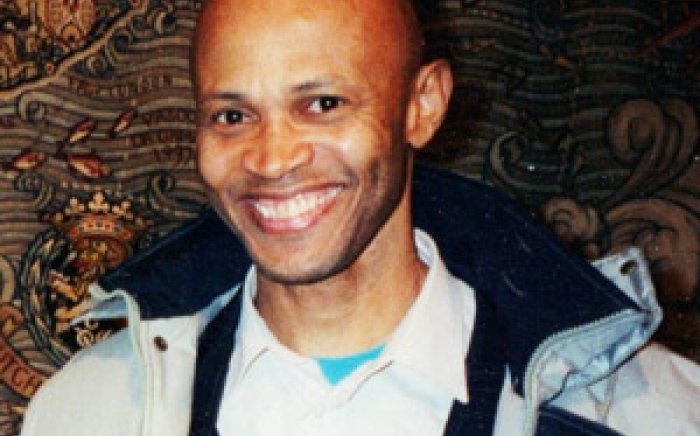
My love of spiritual poetry
Manatita Hutchinson London, United Kingdom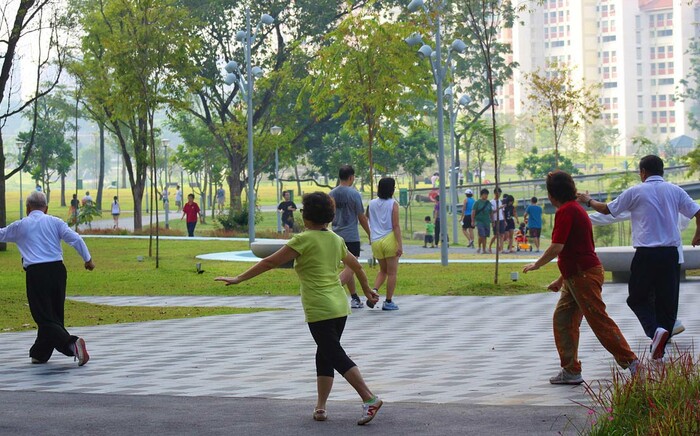
The most beautiful and fulfilling of all possible experiences
Jogyata Dallas Auckland, New Zealand
So much longing, for something
Pushpa rani Piner Ottawa, Canada
The Ever-Transcending Goal
Preetidutta Thorpe Auckland, New Zealand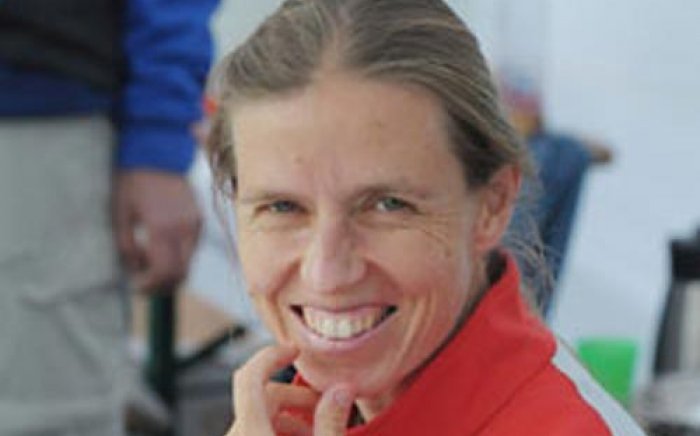
Filled with deepest joy
Tirtha Voelckner Munich, Germany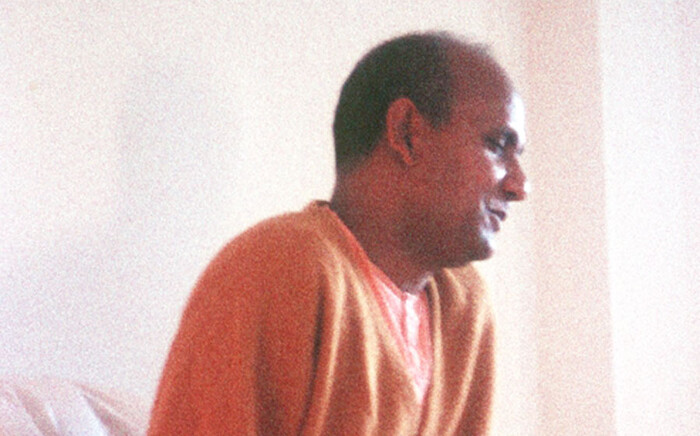
How my spiritual search led me to Sri Chinmoy
Vidura Groulx Montreal, Canada
My 5 a.m. strategic meditations
Sanchita Fleming Ottawa, Canada
Spiritual moments with my grandmother
Patanga Cordeiro São Paulo, Brazil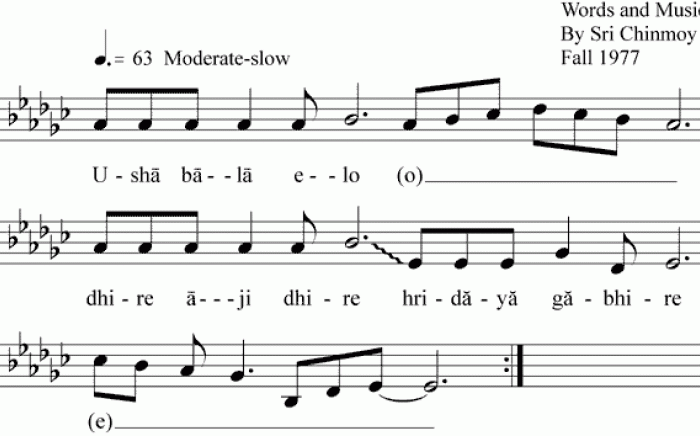
In the Right Place, At the Right Time
Eshana Gadjanski Novi Sad, Serbia
I was what you call a classic unconscious seeker
Rupantar LaRusso New York, United States
The oneness of all paths - personal experiences
Nirbhasa Magee Dublin, Ireland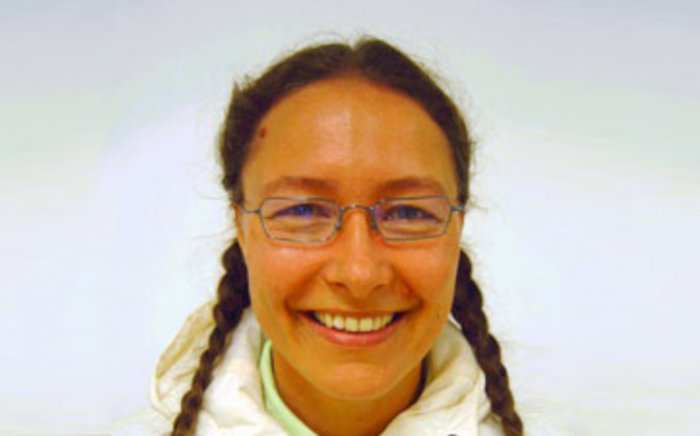
You only have to keep your eyes and ears open
Gannika Wiesenberger Linz, Austria
Patanga: my spiritual name
Patanga Cordeiro São Paulo, BrazilSuggested videos
interviews with Sri Chinmoy's students
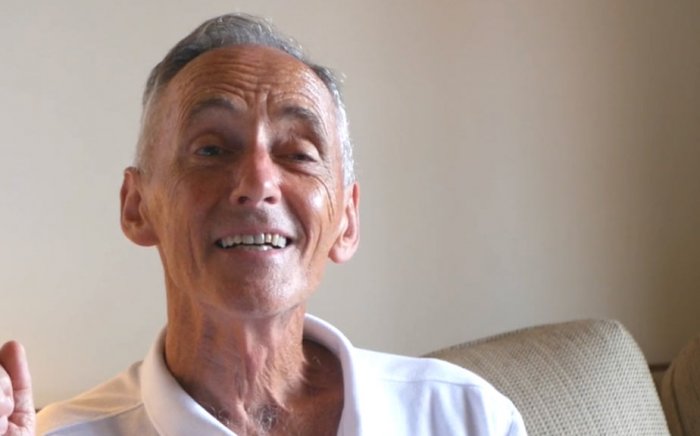
An airport meditation experience
Jogyata Dallas Auckland, New Zealand
Running a Six-Day Race
Ratuja Zub Minsk, Belarus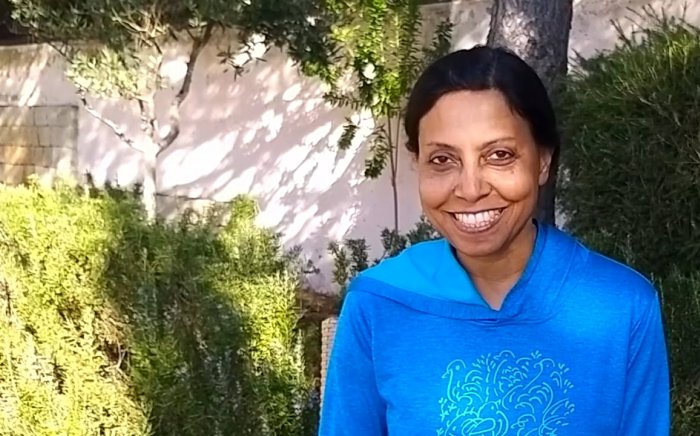
The greatest adventure that you can embark on
Mahatapa Palit New York, United States
Meditation: you make progress just by doing it
Jogyata Dallas Auckland, New Zealand
Making progress on Sri Chinmoy's Path
Daulot Fountain Seattle, United States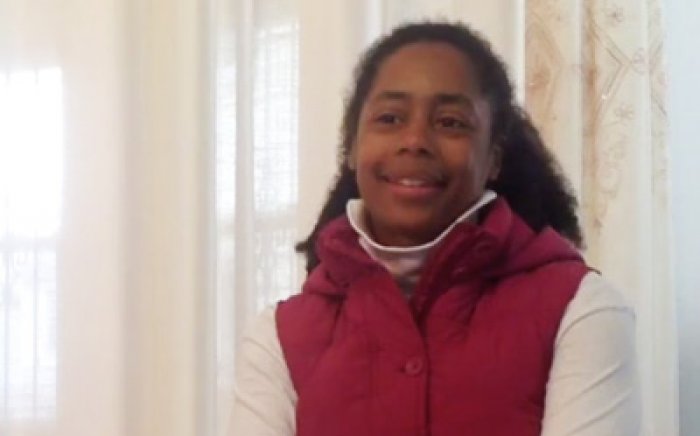
My first impressions of Sri Chinmoy's philosophy
Lunthita Duthely Hialeah, United States
My well-scheduled day
Jayasalini Abramovskikh Moscow, Russia
Except where explicitly stated otherwise, the contents of this site are licensed under a Creative Commons Attribution-NonCommercial-NoDerivs 3.0 Unported License. read more »
SriChinmoyCentre.org is a Vasudeva Server project.









